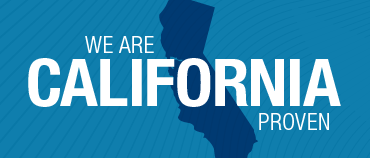In order to improve outcomes, serve complex populations and offer quality care at the lowest acuity setting possible, provider organizations must have access to quantifiable data that is easy to view, flexible and drives performance. If agencies have the data but are unable to quickly read and understand it, or cannot use it to their immediate advantage, then those analytics are of little to no use. How can provider organizations not only gain access to digestible and up-to-date metrics, but also use that data to drive decisions and measure outcomes?
In a recent webinar, The Data That Moves Us, Netsmart Senior Solution Strategist, Data Services Steve Harm and Outreach Director of Quality and Information Kelsey Silver, LMFT explore the opportunities, advantages and approaches to becoming a data-driven organization. Outreach is a behavioral health organization specializing in substance use and addiction services that sees more than 5,000 clients per year. The two presenters discussed ways organizations such as Outreach can leverage data analytics tools to track operational, financial and clinical measurements.
In order to get the most out of a data analytics tool, organizations should first identify what exactly they’re looking for in term of metrics. It’s best to start with three to five identified key concepts that are going to be impactful to your organization. What kind of data will help your organization achieve its goals and provide value to all staff?
Harm also encouraged providers looking to take their data to the next level to consider the tools they already have in place. When looking to use data more efficiently, providers may be surprised at the resources they already have that just need to be better leveraged across the organization. Self-service is also a major part of successful data use, so users should consider how their staff and leadership can look at the metrics they already have from a different vantage point based off the identified key concepts they initially set.
Once an organization decides to move forward with adopting a new data analytics tool, it’s important they not only choose the right solution, but also discover the right place to put it and the right time to release it to their staff. Ensure the technology chosen is one that is able to achieve your goals and help drive outcomes based on available data. As far as the right place, users need to consider the setting in which data will be deployed. Where will staff see it throughout the day? Whether that be emailed every morning, or shown on the screen when they log in, there are a lot of options through various analytics solutions organizations need to consider based on how they plan to use the tool.
In order to become a more data-focused organization, Outreach adopted Netsmart KPI Dashboards. The data analytics solution tracks key performance indicators (KPIs) and provides data visualization for clinical, financial and operational metrics. Users are able to create customized views and filter or drill down data based on program, service type, client access and more. It offers a daily performance dashboard that shows leading indicators at a longitude view, all at a glance.
During the webinar, Silver shared three use cases where Outreach was able to use KPI Dashboards to measure successes, view opportunities for improvement, and analyze services and populations. The use cases included metrics regarding Outreach’s financial, operational and clinical standings.
Financial: As a nonprofit, financial health and stability is crucial for Outreach. To enhance financial awareness, they started by narrowing down on liability, cost of claims and sum of payments received to see how and why current revenue was being impacted. KPI gives them the ability to look at the data to see if they are billing for fewer services, if the payer mix has shifted, or if they need to shift focus of billing department on collections. By analyzing the data sorted and displayed by KPI Dashboards, Outreach leadership was able to see to see certain trends indicating a shift away from Medicaid populations toward commercial populations, which impacts payment amounts and timelines. It also helped them shift priorities and focus more on the billing department to speed up the denial process and take a deeper look at contract negotiations for commercial populations.
Operational: Outreach wanted to ensure they could maintain quality of care amid COVID-19, especially as resources and priorities began to shift. KPI allows users to create custom dashboards, so Outreach built KPIs specific to COVID. Based off operation staff feedback, they wanted to know if they were still properly engaging clients, and if they were still doing enough services both for the health of their communities and the organization. Silver designed a KPI screen around engagement to help operations staff identify if they were engaging clients efficiently, as well if they were still meeting state requirements despite waivers in place. In addition, Outreach used KPI Dashboards to analyze prescriber services, service delivery rate among complex populations and changing needs of clients. The flexible dashboard allows staff to see trends over time to help make operations more efficient.
Clinical: Trauma informed services are a vital part of Outreach’s offerings. They wanted to use KPI Dashboards to look at trauma from a client’s perspective. They implemented a trauma screen that allowed them to look at specific data in a discreet and overt manner. KPI showed them trends such as an increase of trauma involved clients, which let them know they needed to adjust programming to meet this need. It also helped them create a timeline to identify if a trauma screen is being completed before psychiatric evaluation, which helps saves clinicians time. Data visualizations prompted an increase in safety programming across the agency and an improved awareness of trauma happening in the organization and off-site visits.
A single point of information helps Outreach staff make decisions and determine action items similar to the use cases above. KPI Dashboards provides visibility to data to allow key members to drive decisions that are influenced and informed by the metrics right at their fingertips. Access to data is also highly flexible and self-serving, which allows users to have a real-time view with the ability to customize settings, make selections and drill down data to better inform staff on information they didn’t have before. They no longer have to wait for the data to be presented to them by IT staff because the data is readily available and easy to read.
Harm wrapped up the webinar by talking to the importance of becoming a data-driven organization, especially as payment methods, regulatory needs and care delivery continues to change. Data users understand and use to their advantage is powerful. While there are a variety of data analytics platforms out there, be sure your organization picks one that best fits your needs and current capabilities.
Watch the full webinar here.









